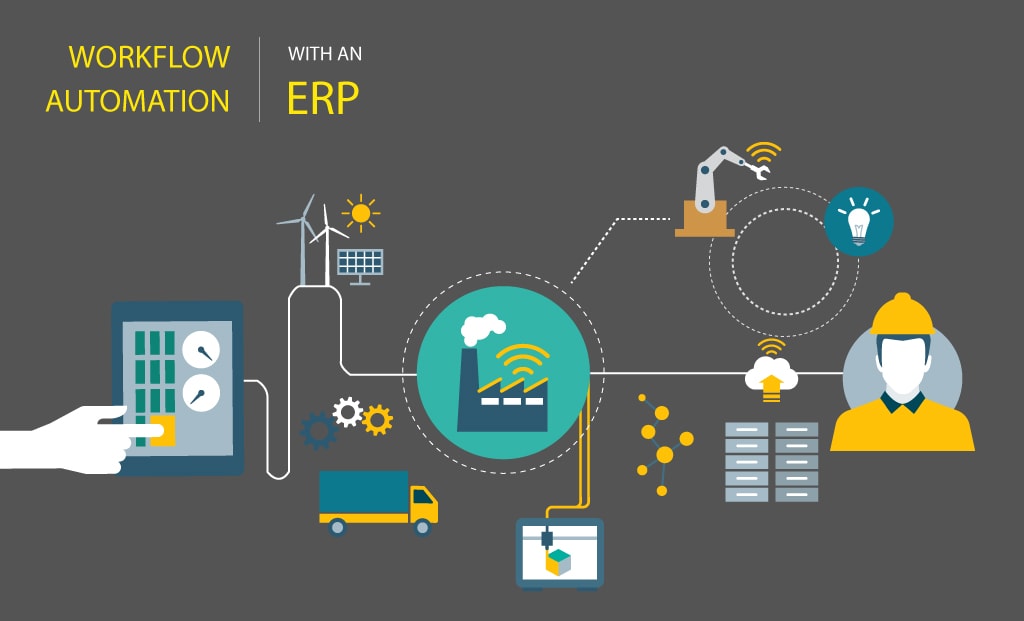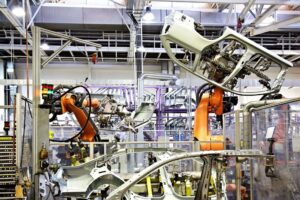Manufacturing is completely driven by processes or what we can call workflows. In an era where technology is omnipresent, there are manufacturers who still drive their businesses through manually-run processes. While in the short-run, this does the trick. In the long-run, it leads to acute wastage of time, resources and money thereby scoring very low on overall manufacturing efficiency and production. Therefore, it becomes highly crucial for manufacturers to digitize certain manufacturing workflows and information systems for more efficiency, better utilization of resources (both man & material), greater productivity, and increased profitability.
Let us see how this can be done with the help of an Enterprise Resource Planning (ERP) software.
- Automating Inter-department and External Communications
- Automating Sales, Purchase and Inventory Management
- Automating Production Scheduling and Manufacturing
- Automating Supply Chain Management
Automating Inter-department and External Communications
Manufacturers totally rely on paper-based communication and documentation to conduct their manufacturing operation. This slows down production due to the time taken to create a document, get it approved from relevant personnel, and physically move it to the other department for further processing.
All this can be eliminated with Electronic Data Interchange (EDI). EDI ensures swift, secure electronic-media-based communication between departments and external suppliers, partners etc. You can electronically transact order status, releases, ASN and invoices with your trading partners. Moreover, you can maintain EDI formats that are consistent with your partners with the help of on-premises or online EDI translation packages. You can efficiently manage MRP, purchases, deliveries, queries etc. with your partners and customers.
By automating communication within your organization, you can significantly
- Reduce paper-usage, storage, postage, archive retrieval, procurement etc.
- Speed up business cycles due to quick flow of information to your customers and partners.
- Improve data quality due to elimination of data entry errors, loss of documents etc.
- Reduce waiting time, order-to-cash cycles owing to real-time visibility to data across the entire supply chain.
Automating Sales, Purchase & Inventory Management
In a traditional set up, manufacturers manually keep track of inventory and update it on a frequent basis. When a sales order arrives, they check for sufficient inventory and then take a decision whether to raise a purchase order for fresh stock or go ahead with a work order. This takes up lot of time owing to physical inventory checks and immense documentation.
An ERP analyses previous sales-trends, current sales orders, inventory levels and determines the number of stock required for future orders. Based on the analysis and demand forecast, it initiates re-order of raw materials by raising a Purchase Order (PO) or Request for Quotation (RFQ) with designated suppliers. In case of any demand changes, it sends automated reminders to purchase managers & suppliers to delay or expedite shipments based on certain pre-defined rules.
This automated workflow ensures optimum inventory levels at all times, thereby reducing the need to over-stock & avoid associated storage and maintenance costs. Also, manufacturers can quickly issue work orders based on sales orders, thereby increasing the pace of production and drastically decreasing manufacturing lead times.
Automation in Production Scheduling & Manufacturing
As a manufacturer, determining the exact amount/number of materials, total resources and time needed to finish a particular job is highly crucial and cannot be done without an ERP.
Updates from Sales & Purchase, Inventory, Supply Chain, EDI modules enables an ERP to forecast the exact number of units to be manufactured. Based on this, Material Requirements & Planning (MRP) module calculates the number of materials to be used. Automatic processing of nesting data accurately provides the materials to be consumed, job progress and parts cut. In case of material shortage, expediting work orders or inventory movement, the system alerts operators based on which they can initiate purchase processing. Production Scheduling arrives at total time required for the entire production, and number of man-power to be included based on their shift timings & availability. Based on Demand Due dates already calculated by the system, you can optimize supply planning and provide accurate shipping-date to customers.
Proactive scheduling and real-time visibility of information for shop-floor personnel ensures reduced production time, minimal wastage of resources (both man & material), and enormous cost savings.
Automating Supply Chain Management
One of the toughest challenges of supply chain management is keeping track of products, packages, shipment and deliveries. By implementing an ERP integrated with a tracking technology, you can get far greater visibility of the supply chain.
With Barcode and Labeling technology, you can easily digitize your physical assets such as raw materials, semi-finished and finished products etc. By integrating them with ERP, you can track its movement at all times, zero-in on a specific part/product/sub-product it will go into and the customer to whom it would be shipped. You can also track heat numbers, material composition data and attach mill certificates to lot numbers. By online-tracking of materials/goods from your suppliers, you can anticipate its arrival and plan production accordingly.
In case of identification of defect, you can swiftly trace the origin of a specific part/unit or an entire product batch located within the supply chain and conduct quick product recalls. This leads to retention of quality, increased customer relationship levels & market reputation.
These are just some of the work-flow processes that can be automated with the help of an ERP and other allied applications. All respective manufacturing work-flow modules in an ERP work close-knit with each other and provide real-time view of manufacturing progress, material movement, resource availability and financial health at all times.






